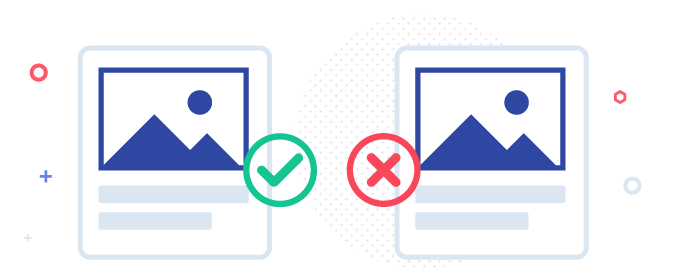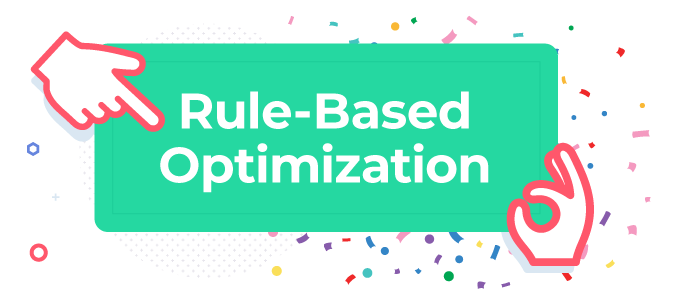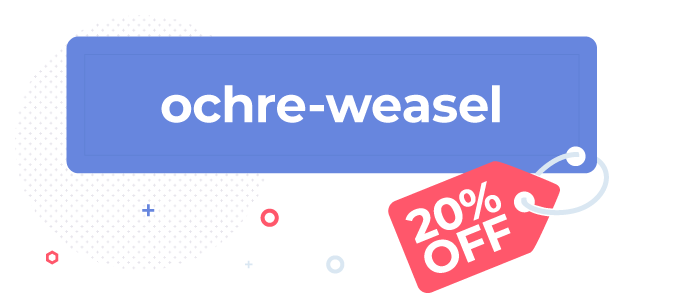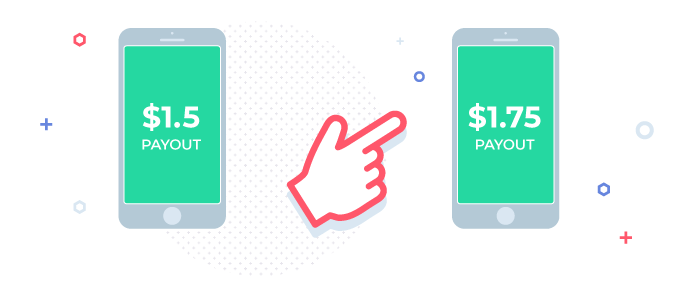Contents
How to combat negative ROI? 6 pro tips for affiliate marketers.
•
Nearly every beginner affiliate marketer starts from a negative ROI. It’s normal and common to have campaigns running at a loss for a while… but not for long.
Affiliate marketing has its ups and downs. Regardless of how experienced you are and how well you’ve learned to optimize campaigns, at some point, your ROI will fall into red and you’ll have to do something to pick it back up.
So in order to help you out, we decided to share these tips and tricks on how to combat negative ROI and bring your campaigns back to profitability.
Negative ROI happens when your ad spend is greater than the profits coming from ad conversions. Assuming you are running a RON campaign, your traffic is coming from a large number of sources. Under each source there are numbers of smaller placements, for example targets, each bringing you a small portion of traffic.
Not every placement, target, or source, will match your offer. Some of them will be so mismatched that they won’t bring a single conversion. Some of them will convert well but only for more expensive placements (higher bids). And some of them will perform well right from the start.
Although it’s good to test as many traffic placements as possible when you’re first starting, as soon as you have some significant data and your ROI is constantly red, it’s time to do something about it.
Launch a whitelist campaign
The first method of combating negative ROI is using whitelists. You have 3 possible options.
1. Make your own whitelist
Look at the data and find the best converting placements (preferably green or close to breakeven) and create a new whitelist campaign with only those segments of traffic, for example sources in Zeropark. Additionally, you can keep the original campaign running with the whitelisted sources paused to see how they perform, if adjusted, with a lower or higher bid.
You can also create a narrower campaign, but do keep in mind that unless you can single out a high number of well performing sites (targets), you might end up receiving very little traffic.
2. Use recommended whitelist
If you don’t have enough data, or if the data you have is not significant enough, you can always ask a traffic source support team for a whitelist for your campaign. All you need to do is tell them the vertical and ad format of your offer and what GEO you need the whitelist for. The support team will give you a list of selected placements that perform particularly well for the kind of set-up that you have.
3. Mix them
For the biggest volume of well tailored traffic you can use your own findings together with traffic source recommendations. That way you will receive as much traffic as possible from placements that are proven to work with your particular type of offer.

Optimize landers and creatives
Assuming that you’re split testing a number of landing pages and creatives (as you should be), the next step to combating negative ROI should be their optimization.
Just as you want to gather data by trying out as much traffic as possible, you will want to optimize your campaigns by cutting any parts of your campaign that didn’t perform, visuals included.
Negative ROI can easily be caused by a lot of people clicking on your ads because they’re interested in what they promise, and then quitting the funnel because of a poor landing page or offer page that doesn’t meet their expectations.
So, in order to make sure you are only using the best creatives and landers, you should look at the gathered data and get rid of the underperformers. You can do that by simply looking at the ROI and spend of each ad creative and judging by yourself which ones are worth keeping. Alternatively, you enter the number of impressions and the number of conversions into this Bayesian A/B Testing Calculator and let it tell you which creative has the highest chance of success.
Once you find the winners and reject the losers you can continue split testing by slightly modifying the winning asset.

Use auto-optimization rules
It’s easy to end up with a negative ROI when you have a lot of campaigns running simultaneously and you have to keep an eye on each one of them individually.
That’s exactly why using auto-optimization features can be both a life- and money-saving solution.
An example of such an auto-optimization tool is Zeropark’s Rule-Based Optimization. It allows you to set fixed rules in the form of IF-THEN statements so that once specified conditions are met, the algorithm will automatically optimize your campaigns for you.
Here is the wording of such condition:
IF a condition is met FOR the selected criterion WITHIN a given time frame, THEN perform a certain action.
By setting some very basic rules you will make sure that even if you leave your campaigns unattended, they won’t keep running at a negative ROI.
Here is an RBO rule example:
IF a target has more than $20 spend & ROI is lower than 0% within the last 7 days THEN pause.
The possible optimizations include pausing and bidding up or down on larger and smaller placements of traffic. That gives you plenty of options to control the flow of your traffic when you’re taking a break from your computer. Besides, traffic tends to be volatile and humans do need sleep. Setting the rules can save you from unexpected traffic fluctuations tanking your campaigns.
Additionally, negative ROI can happen due to creatives burning out or changes in payout offered by affiliate networks. Setting auto-optimization rules ensures that you don’t lose money because of things you can’t control.
Rule-Based Optimization is overall a great tool for making sure your campaigns are always watched over by an algorithm that won’t think twice about stopping the underperformers. People, unlike software, tend to be biased. You might be reluctant to pause an underperforming source because you had a lot of success with it while running a slightly different campaign. But if the data clearly shows that it doesn’t work this time, you shouldn’t wait until you lose money, you should just pause it.
And if that seems difficult, why not use Rule-Based Optimization to make that decision for you?

Make sure you’re not overpaying for traffic
Overpaying for traffic is not a very common occurrence for beginner affiliates as they’re usually on tight budgets and trying to make things work while spending as little money as possible.
However, no matter what your experience level really is, you need to watch your win ratio. The win ratio tells you what percentage of your bids are winning the bidding auctions. It pretty much tells you whether what you’re paying for traffic is enough.
The correct win ratio is between 70-90%. Only when you get to that point you can be sure you’ve fully tested the potential of the source. If it matches your offer well, then slowly increasing the win ratio to the recommended number is highly likely to bring you profits.
But what if your win ratio is higher than this and you’re still well into negative ROI? Different sources have different amounts of traffic and require different bids to unlock profitable placements. While some sources might have low ROI at first and then become profitable when increasing the bids, some sources will start with a fairly high win ratio, high spend and slightly negative ROI.
In those rare cases, you should slowly try to decrease the bids. That way, you will mostly likely keep buying from the same targets and placements but for a lower price. And if you spend less and get roughly the same amount of conversions your ROI will smoothly slide into green numbers again.

Search for offers with slightly higher payouts
Getting an offer with a higher payout might seem like a poor idea to combat negative ROI but bear with us and we’ll tell you why it makes sense.
We are not telling you to change the offer completely and start from scratch. What we’re saying is – look for the specific offer that you’re currently running on other affiliate networks. Sometimes many networks have the same offers, but since they all charge a different margin, you have a good chance of finding your offer with a slightly higher payout.
That way, since you already have data on what performs well with that offer, you’ll be able to increase the profits from payouts while retaining the costs. If your offer was close to breakeven, that extra money boost will surely push it into green numbers.
Another way of getting a higher payout is simply by asking your network representative if that’s possible. If you’ve been working with them for a while and had no issues with low quality, the network representative (or your account manager) will check if increasing your payout is possible.
Payout bumps are definitely possible for everyone with a good record of providing quality leads. You don’t have to be a super-affiliate to ask for a payout bump. Of course, they won’t always be possible due to various reasons, but it never hurts to ask!

Cut aggressively
Lastly, when testing GEOs with huge volume, negative ROI may be caused by many mismatched placements, for example sources and targets, sending traffic your way.
Obviously, this is all very normal and there is no other way to test high volume GEOs. But while cutting aggressively might not be the best option for smaller scale campaigns, dealing with huge volumes calls for assertiveness.
Don’t let yourself drown in traffic. Set Rule-Based Optimization that cuts sources or targets if they don’t become profitable after spending a maximum of 2-3 times the payout. If you’re getting thousands of impressions or clicks every hour, you can allow yourself to be harsh.
You have to remember, though, that the more aggressive you get with cutting and pausing sources the less traffic you will receive. This method works primarily for big campaigns with medium to high budgets. If you use that strategy on smaller GEOs you might find yourself with not enough traffic to make the offer worth running.

Conclusions
Negative ROI is nothing to be afraid of. Testing something new in affiliate marketing almost always comes with losses. But if you need to lose some money to be able to earn more in the future, this really isn’t a loss. It’s an investment.
Should you find yourself with a campaign running at a loss for just a little bit too long, this article will surely give you plenty of ideas on how to fix the problem!
Now that you’re not afraid of negative ROI, it’s time to come back back to running campaigns.
Are you ready to see your campaigns turn green?
Run your ads with Zeropark now!
Magdalena Bober




